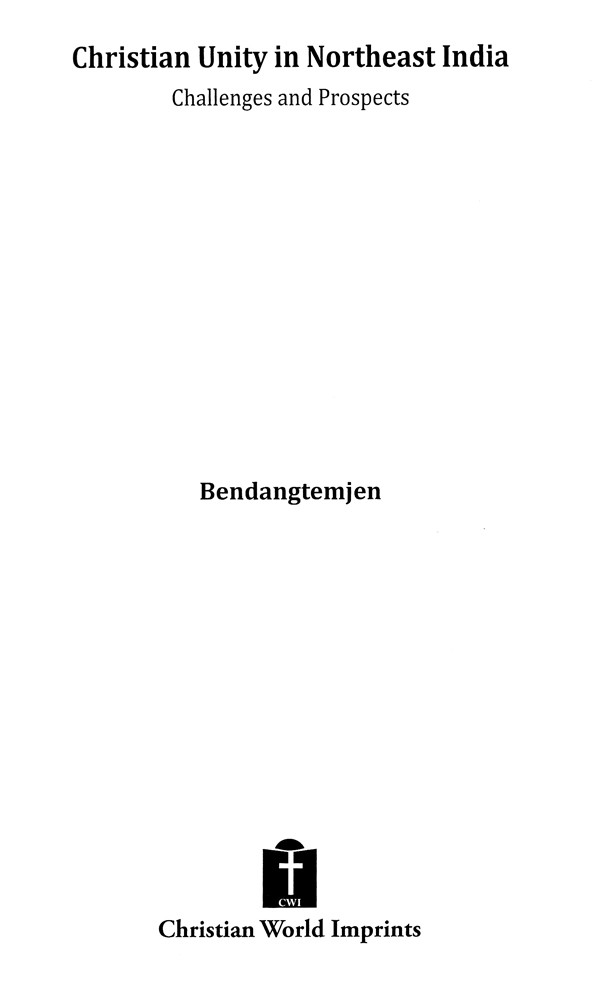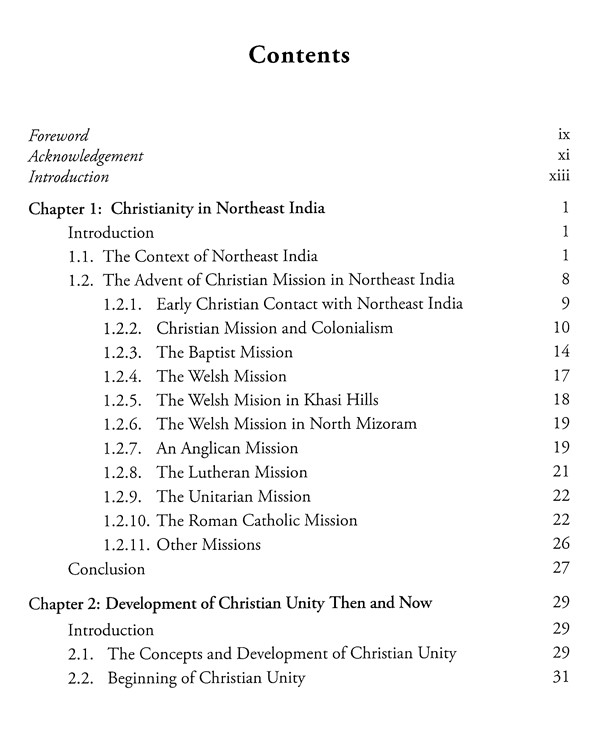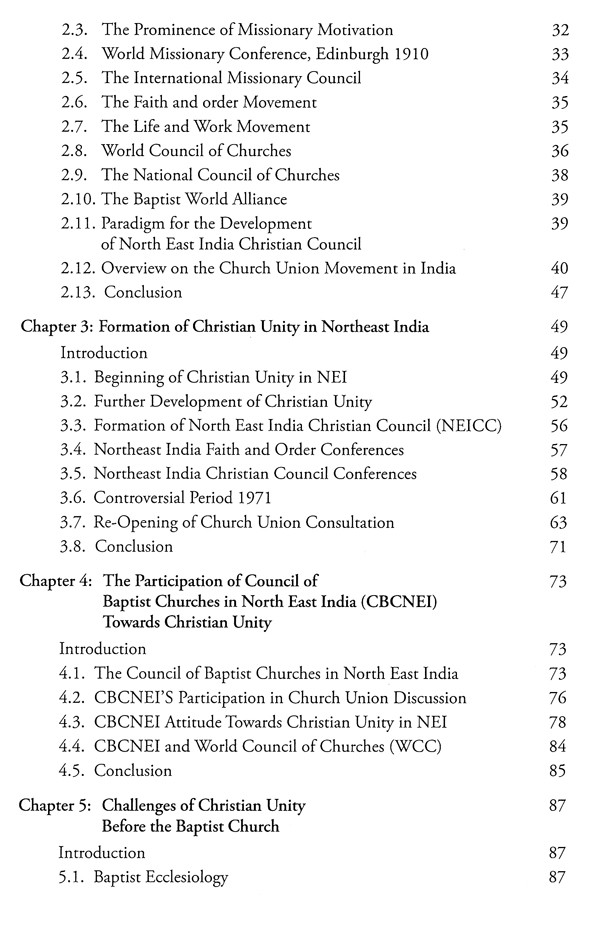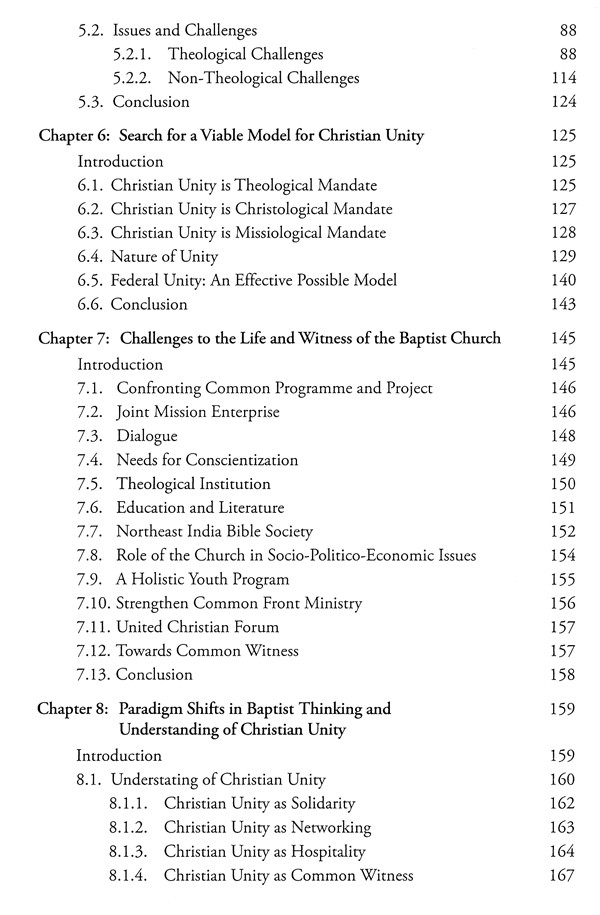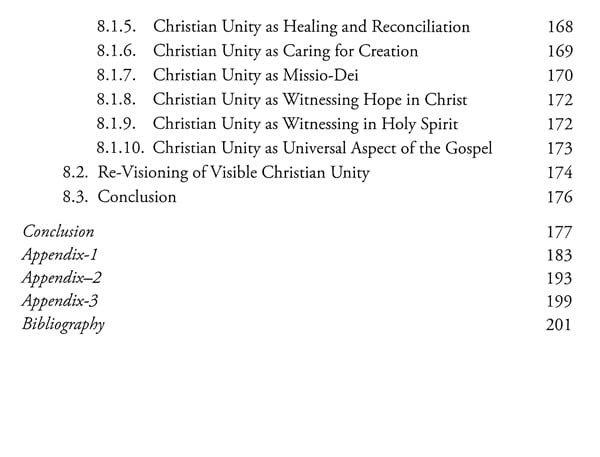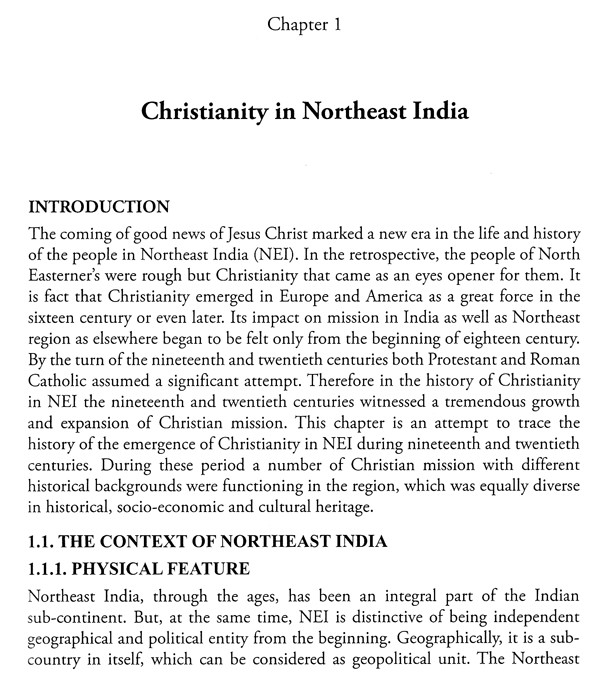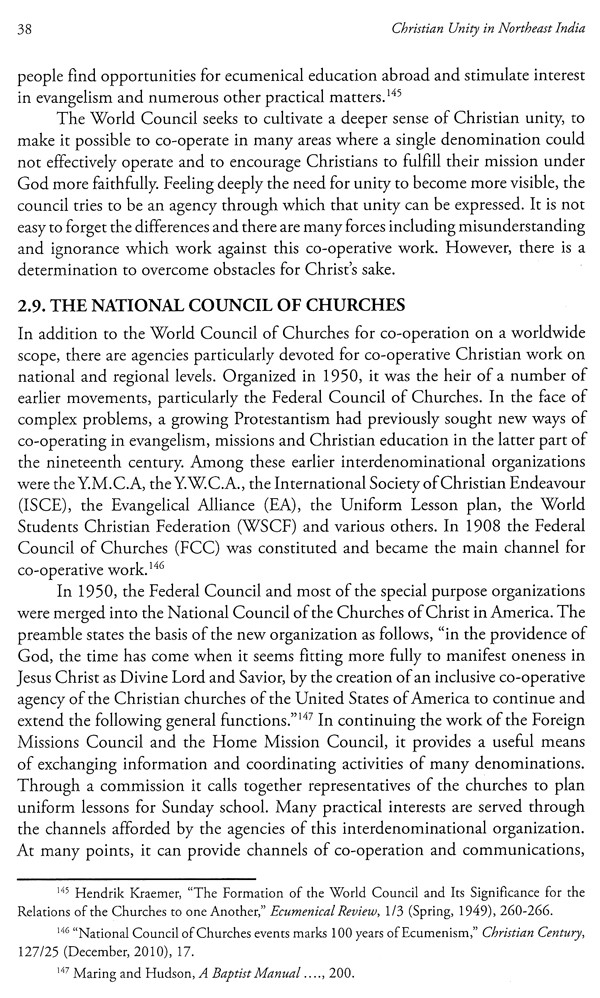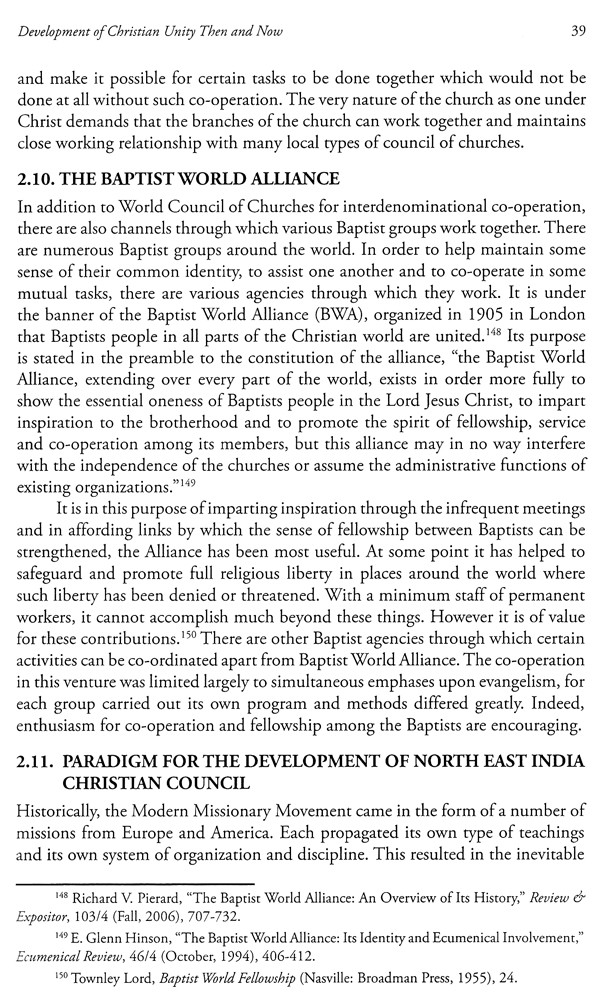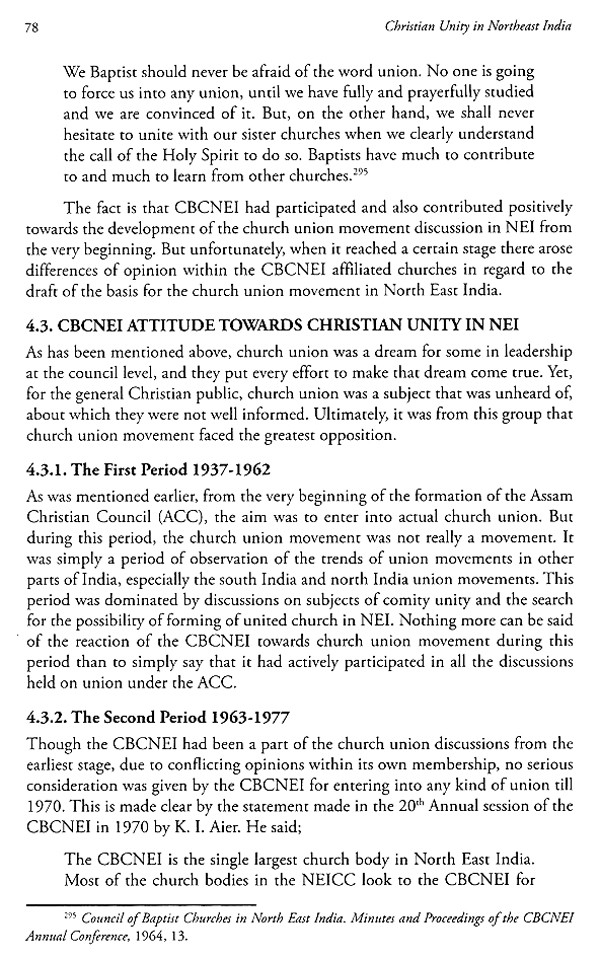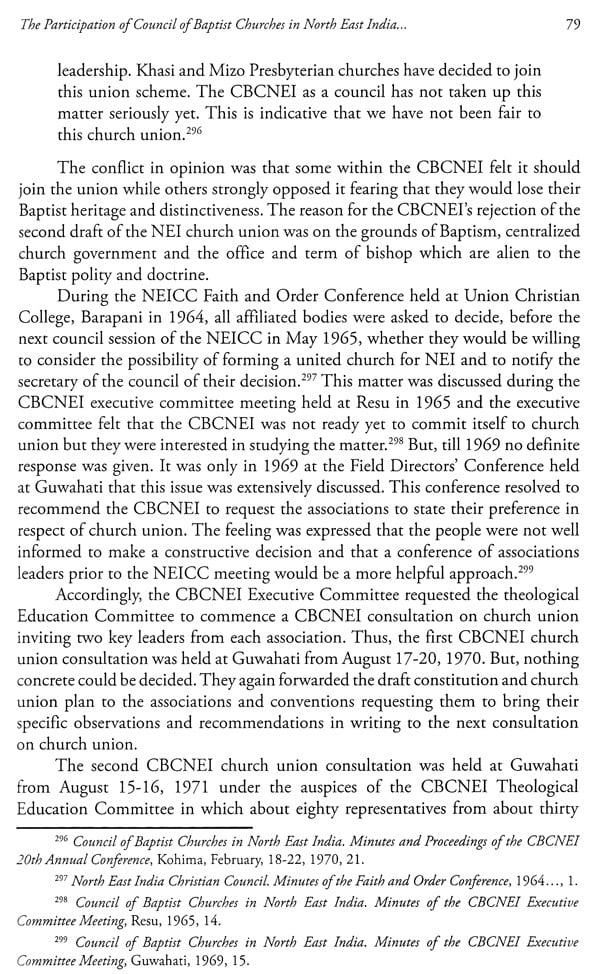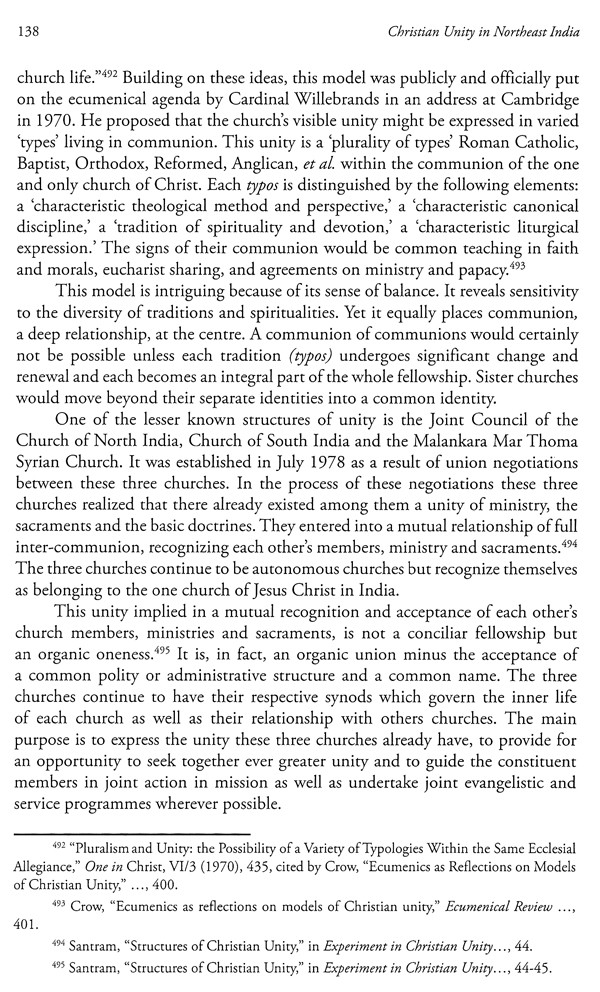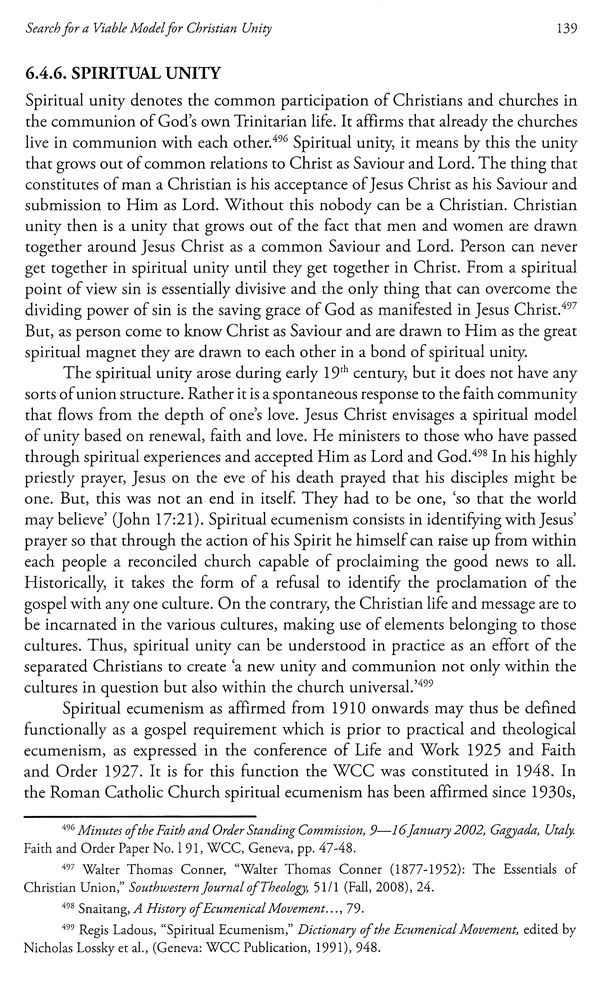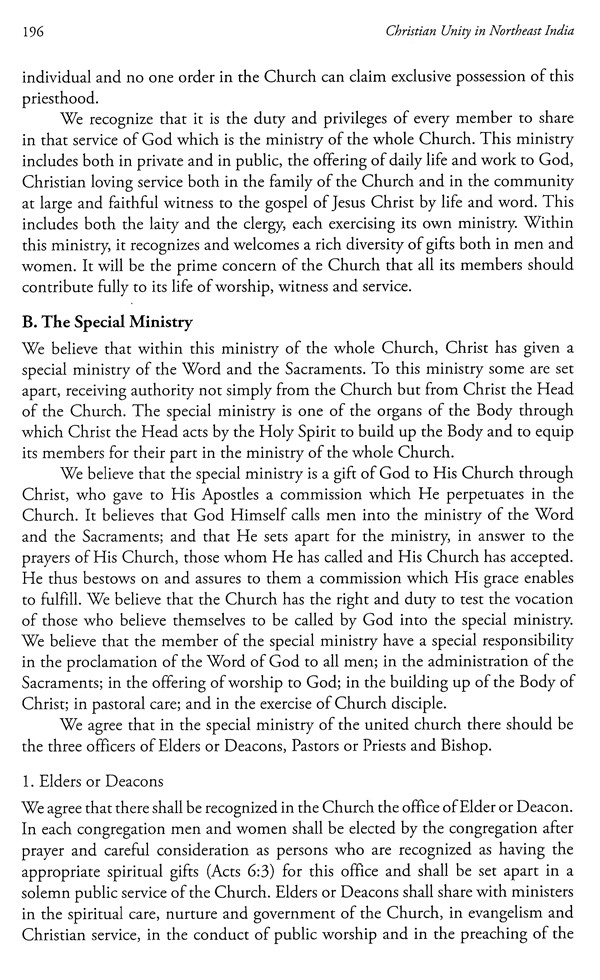
Christian Unity in Northeast India- Challenges and Prospects
Book Specification
| Item Code: | UBA419 |
| Author: | Bendangtemjen |
| Publisher: | Christian World Imprints, Delhi |
| Language: | English |
| Edition: | 2020 |
| ISBN: | 9789351484028 |
| Pages: | 236 |
| Cover: | HARDCOVER |
| Other Details | 9.50 X 6.50 inch |
| Weight | 560 gm |
Book Description
Christian Unity in Northeast India: Challenges and Prospects examines the challenges of Christian Unity. which have been working against the formation and further development of Unity among the Christians in Northeast India. It traces the historical development of Christian Unity in worldwide Christianity and further unearths its historical analysis of the pattern of discussion among the churches in Northeast India. It also deals with the challenges of the life and witnesses the churches, to venture out the prospects for the Christian Unity discussion in the region. In the present situation, the understanding of the nature of Christian Unity calls for a wider understanding with regards to the churches and in relation to humankind with the whole creation. As such Christian Unity is not for its own sake, but for the sake of the world and its salvation for the whole creation. Yet, it was a very ambitious plan to bring churches in Northeast together, however, it is still a not yet accomplished task. We have to continue this journey with a fresh attempt today, so that the Church becomes a truly missionary church.
Rev. Dr Bendangtemjen is the Registrar, Dean of External Studies and Associate Professor in History of Christianity Department at Leonard Theological College, Jabalpur, Madhya Pradesh, affiliated to Senate of Serampore College (University). He got his Master and Doctoral Degree from FFRRC (Federated Faculty for Research in Religion and Culture) Kottayam, Kerala. He belongs to Baptist Church of Nagaland, India. He is married to Dr Bendanglemla Longkumer who teaches Christian Theology at the same college and they are blessed with three children Eten, Taien and Loren.
The book "Christian Unity in Northeast India: Challenges and Prospects" is a wonderful and unique book, very essential for all the Christians to read and learn history of Christian Unity in Northeast India. The author has done an excellent work by making historical analysis method to carry on the discussion on Christian unity in Northeast churches. The Unity of divided churches has become an important principle in the life of the Christians at this present generation. This historical attempt has been very meaningful and significant in the present context of Northeast India. Because it appears that most of the Christians in the region are still not aware of what is Christian unity. Although, people at the theological circle are well informed about what is Christian unity, but the larger number of people is not yet awakened to what is going on. Therefore, such research work will provide proper education at grass root level so that the people will respond favourably on to it. It will also help in creating new awareness and a wider ecumenical vision to the church leaders as well as local churches about the importance of Christian unity.
The researcher has intensively explored some of the existing church union models, which would be helpful to give a possible Christian unity structure that could be considered by the churches in Northeast. While exploring the possible model, the efforts were made to attempt the challenges to the life and witness of the churches in the region, in which certain common concern projects such as, mission and evangelism, education and literature, and other social activities may be taken up in joint venture.
The important discussions in the book includes general views of the people on church unions in North East India, Baptist Beliefs and the emergence of Christian missions, historical formation and negotiation of church unions in NEI, exploration of the challenges of church union movement to the Baptists in NEI, and how CBCNEI withdrew its decision to the formation of Church of North East India (CNEI) proposal. It also discusses how then CBCNEI is now a full member of the World Council of Churches (WCC) since June 2016. Finally it discusses on the challenges to the life and witness of the churches in North East India.
The author's concern is that, the understanding of Christian unity need to shift from church centeredness to people centered. This means that the kingdom of God could not be limited to the expressions of the Christian community alone. The concerns of Christian unity had to be widening integrally that involved justice, peace and concern of all creation. As such Christian unity is not for its own sake, but for the sake of the world and its integrity for whole creation. This will shape the new ecumenical calling of the Baptist churches in Northeast India.
If one wants to learn more about the importance of ecumenical relations then this is the right book one must read. It is meant for pastors, theological teachers, church leaders and for all Christians. I send my best wishes and appreciation to Rev. Dr Bendangtemjen, for bringing out such a scholarly book.
The question of Christian unity is a pertinent question in today's situation. It is important to note that whenever we discuss the question of Christian unity we are not simply talking about a sociological convenience. In fact, we are responding to the demands of a theological mandate: the Christian proclamation that God is, God demands that we name the various idolatries that sway us away from our singular commitment to God. Most of our divisions have resulted from distinctiveness to the truths and understandings, and thus a divided church stands under the judgment of God, the God of the whole universe. Thus, the mystery which as Christians we hold dear and precious invites us to mourn sincerely our divisions and seriously seek ways to express our unity which is grounded in our commitment to the Lordship of Jesus Christ.
All these are difficult but important questions; the future of Christian Unity in Northeast India depends on our willingness to face them with utmost seriousness. They show how in the global church we need each other, we teach each other and we learn from each other. This openness makes it possible that we will one day find the unity which is so desirable in region of multi-cultural distinctiveness.
Northeast India's distinctiveness and its beauty lie with its natural components which celebrates the goodness and greatness of the merciful God who cares for His world, His church and His children. When we look around we see, how God unfolds His master plan and intensely care for His people, church and world to live in unity and harmony in the midst of its diversity. With such backdrops when we look at the settings of Northeast region, it is distinctive of being independent in geographical and political unit from the beginning of its existence. Northeast is distinctive feature of being a heterogeneous mass of population representing people of great diversity in terms of ethnic components, linguistic affinity and lifestyle, with many divisive elements based on geographical isolation. This mixed people came into this region from different directions at different times and inhabited the different areas ranging from hills of the Himalayan ranges down to the plains of the Brahmaputra valley. Each of the many small tribes has traditionally lived in isolation from the others. In addition to and owing to their uncommon history of origins, the people's long settlement in the region resulted in the rise and development of autonomous and independent cultural strands even among the homogenous groups. Therefore their culture, religion, tradition, history, philosophy, politics and social living are entirely different from the rest of Indians.
There have been great socio-cultural and political diversities. The people in the plains areas are historically ruled by Rajas, whereas the hills tribals traditionally had a more democratic polity. In many of the hills area each village was a state unto itself, being subject to no other village. Hence, NEI contains many divisive elements based on topographic settings like, tribal identity, language, culture, religion and political system. Christianity was introduced into this region by different denominational missionaries with different historical settings like Roman Catholic, Presbyterian, Baptist, Anglican etc. The general character of the people in the hill is of self-dependence and hence when they embraced Christian religion they did not depend on the missionaries but stood by themselves. Having such Christian background, the development of Christian unity among the existing Christian community happens to be very essential in the region.
**Contents and Sample Pages**
